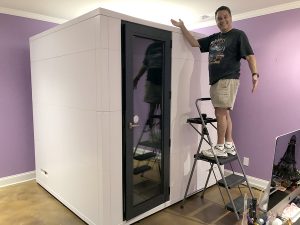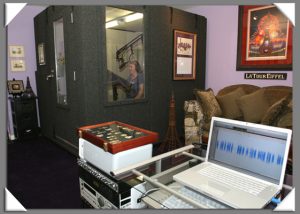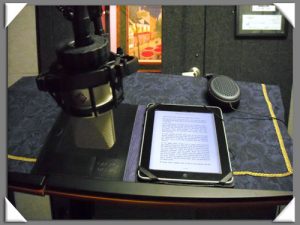At my previous house, we constructed an additional 16′ x 19′ room in 2005 for my studio. I bought a 6′ x 8′ WhisperRoom which fit well in that space. I happily used it for 15+ years.
After moving to this house in 2018, my WhisperRoom seemed a little too large for the room I chose for the studio. I bought a 6′ x 7′ Studiobricks booth earlier this year. It was delivered in 2 large boxes on 11 May.


Drew and I had watched several assembly videos of standard booths and looked through the instructions from Studiobricks. We thought we were prepared and that the two of us could easily and quickly put the booth together. After all, we’d built the WhisperRoom at each house and disassembled it twice. In fact, Drew almost single-handedly disassembled it this last time for its sale.
Reader, we were not prepared, in large part because Studiobricks (SB) did not send the correct instructions for my booth! This article will outline things we learned through the trial and error method over several weeks and tips for assembly of custom-size Studiobricks booths.
Before I continue, I do want to say that SB has been extremely responsive to our messages. However, I would have expected that a company that’s been in business for over 10 years would have all their documentation ready and wouldn’t piece-meal it to the customer as they run into problems. If we’d had all the correct guides at the beginning, we could have saved a lot of time and frustration. I do recognize, though, that the company is greatly expanding its US sales and continuously improving its products and service all the time.
[Read more…] about Assembly Tips for Custom-Size Studiobricks Booths

